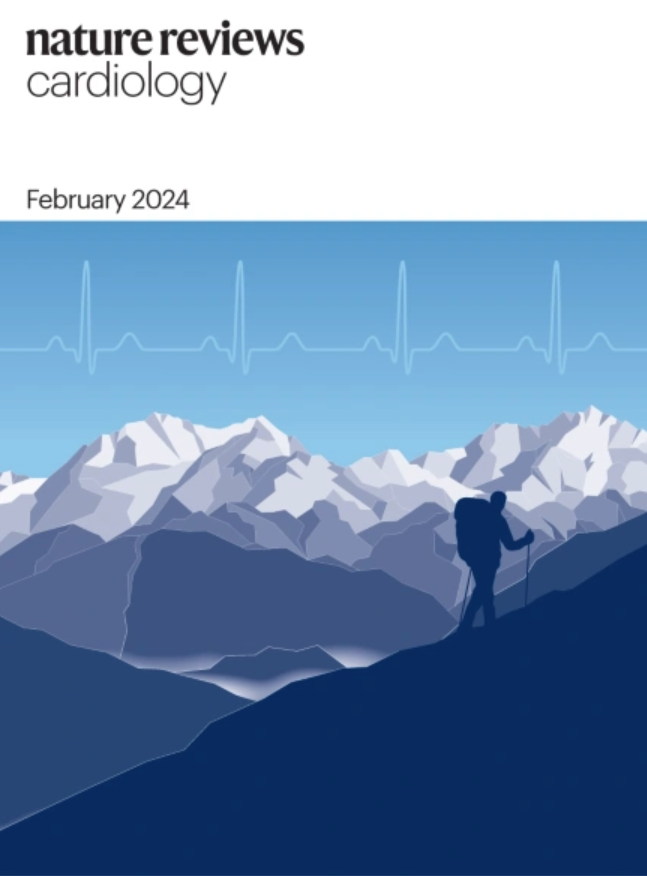Redefining respiratory sinus arrhythmia as respiratory heart rate variability: an international Expert Recommendation for terminological clarity.
IF 44.2
1区 医学
Q1 CARDIAC & CARDIOVASCULAR SYSTEMS
引用次数: 0
Abstract
The variation of heart rate in phase with breathing, known as 'respiratory sinus arrhythmia' (RSA), is a physiological phenomenon present in all air-breathing vertebrates. RSA arises from the interaction of several physiological mechanisms but is primarily mediated by rhythmic changes in cardiac parasympathetic (vagal) activity, increasing heart rate during inspiration and decreasing heart rate during expiration. RSA amplitude is an indicator of autonomic and cardiac health; RSA is diminished or absent in common pathological conditions such as chronic heart failure and hypertension. In this Expert Recommendation, we argue that the term 'RSA', although historically important, is semantically inaccurate and carries misleading pathological connotations, contributing to misunderstanding and misinterpretation of the origin and the physiological importance of the phenomenon. We propose replacing 'RSA' with the term 'respiratory heart rate variability' (RespHRV), which avoids pathological connotations and emphasizes the specific respiratory contribution to heart rate variability. We clarify that RespHRV encompasses respiratory-related heart rate variations in both the low-frequency and high-frequency bands traditionally defined in heart rate variability analysis, and that its amplitude should not be misconstrued as a measure of vagal tone. Adopting the proposed term 'RespHRV' is expected to unify understanding and stimulate further experimental and clinical research into the physiological mechanisms and functional importance of this phenomenon.将呼吸性窦性心律失常重新定义为呼吸性心率变异性:术语清晰度的国际专家建议。
心率随呼吸同步变化,被称为“呼吸性窦性心律失常”(RSA),是所有呼吸空气的脊椎动物都存在的一种生理现象。RSA产生于多种生理机制的相互作用,但主要是由心脏副交感神经(迷走神经)活动的节律性变化介导的,吸气时心率增加,呼气时心率降低。RSA振幅是自主神经和心脏健康的指标;在常见的病理条件下,如慢性心力衰竭和高血压,RSA减少或不存在。在本专家建议中,我们认为术语“RSA”虽然具有重要的历史意义,但在语义上是不准确的,并且带有误导性的病理内涵,导致对该现象的起源和生理重要性的误解和误解。我们建议用术语“呼吸性心率变异性”(RespHRV)代替“RSA”,这避免了病理内涵,并强调了呼吸对心率变异性的特定贡献。我们澄清,RespHRV包括低频和高频呼吸相关的心率变化,其振幅不应被误解为迷走神经张力的测量。采用拟议的术语“RespHRV”有望统一认识,并促进对该现象的生理机制和功能重要性的进一步实验和临床研究。
本文章由计算机程序翻译,如有差异,请以英文原文为准。
求助全文
约1分钟内获得全文
求助全文
来源期刊

Nature Reviews Cardiology
医学-心血管系统
CiteScore
53.10
自引率
0.60%
发文量
143
审稿时长
6-12 weeks
期刊介绍:
Nature Reviews Cardiology aims to be the go-to source for reviews and commentaries in the scientific and clinical communities it serves. Focused on providing authoritative and accessible articles enriched with clear figures and tables, the journal strives to offer unparalleled service to authors, referees, and readers, maximizing the usefulness and impact of each publication. It covers a broad range of content types, including Research Highlights, Comments, News & Views, Reviews, Consensus Statements, and Perspectives, catering to practising cardiologists and cardiovascular research scientists. Authored by renowned clinicians, academics, and researchers, the content targets readers in the biological and medical sciences, ensuring accessibility across various disciplines. In-depth Reviews offer up-to-date information, while Consensus Statements provide evidence-based recommendations. Perspectives and News & Views present topical discussions and opinions, and the Research Highlights section filters primary research from cardiovascular and general medical journals. As part of the Nature Reviews portfolio, Nature Reviews Cardiology maintains high standards and a wide reach.
 求助内容:
求助内容: 应助结果提醒方式:
应助结果提醒方式:


